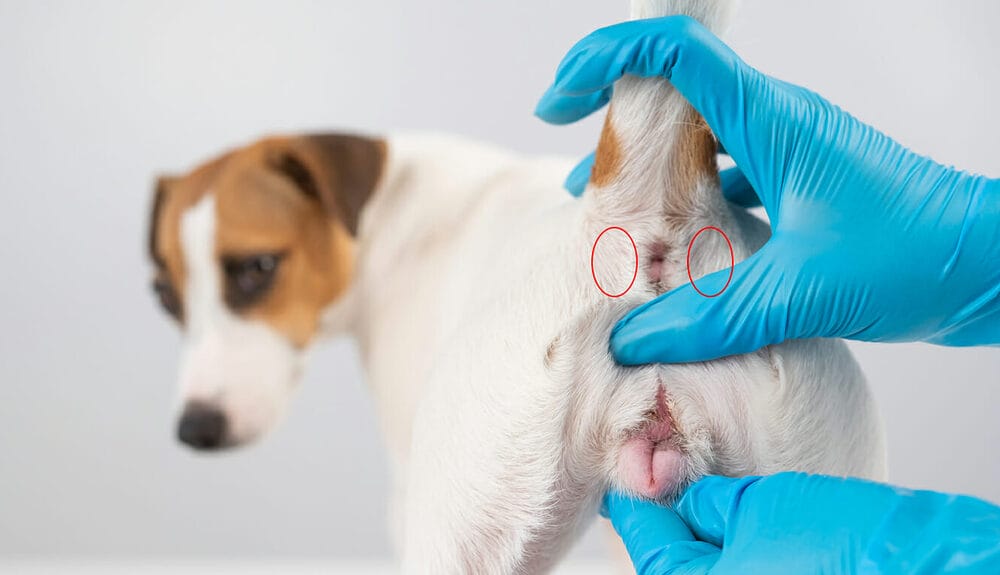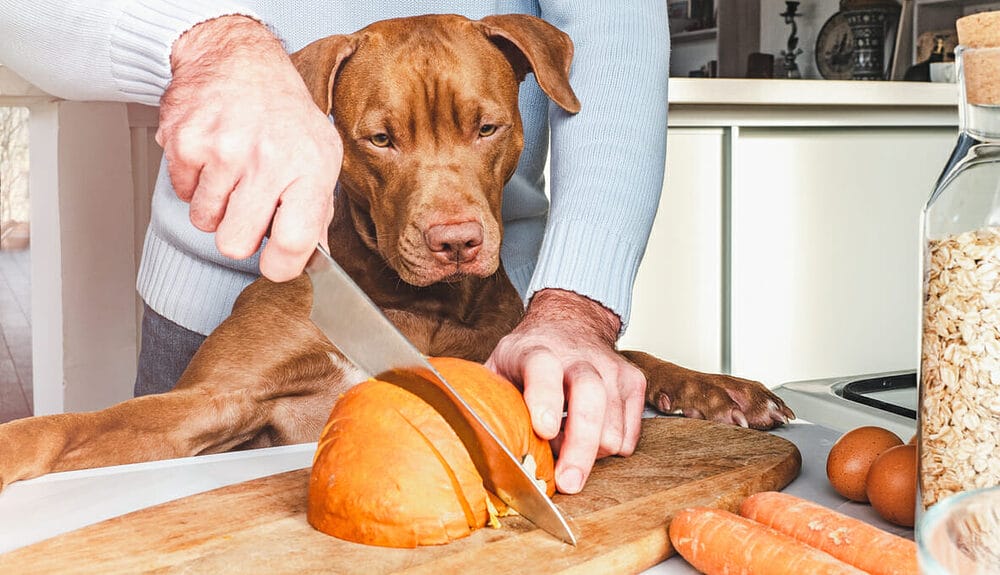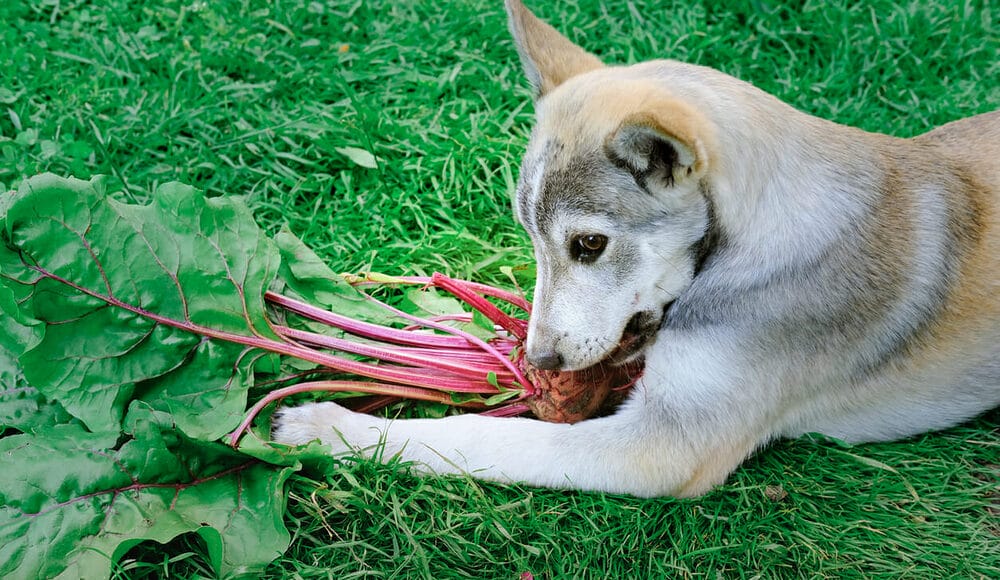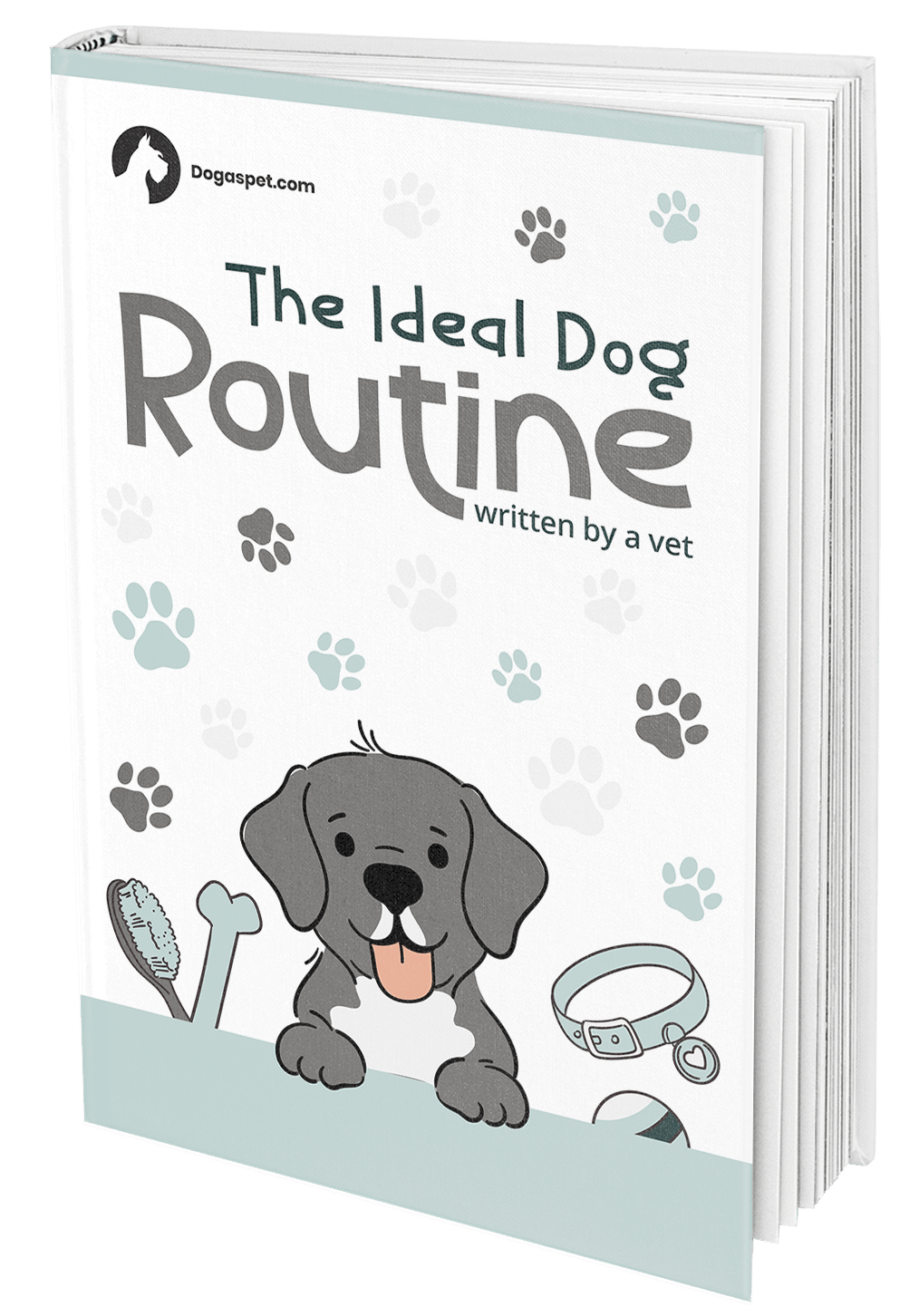
We’ve already covered anal gland issues and the importance of a pup’s diet extensively on Dogaspet.
Now, here’s the lowdown on the best foods for helping them express anal glands naturally, plus how it all depends on breed, age and diet.
Let’s dive into it!
The 10 Best Foods To Help Dogs Express Anal Glands Naturally
High-fiber food is definitely the best food when it comes to helping dogs express anal glands naturally. In addition, fiber improves digestion, gut microbiome and even reduces inflammation in the large intestine.
For those of you who don’t know what anal glands are–they are small glands just above the anus that helps dogs communicate with each other.

Unfortunately, when these glands overfill, it can lead to pain, discomfort, or even a potential option for developing more serious health problems.
But let us save you an expensive trip to the vet’s office and try to prevent your dog from getting a manual gland extraction.
The following human foods are a great way to give your pup the relief they need.
10 Foods To Help Dogs Express Anal Glands Naturally
- Pumpkin
- Apple
- Broccoli
- Carrots
- Lentils
- Sweet potatoes
- Rice bran
- Oatmeal
- Flaxseed
- Beets
Pumpkin

Probably the best food that’s packed with fiber is pumpkin. Thanks to its sweet taste and squishy texture, pumpkin is well-liked by dogs and humans alike. But, as we said, besides being tasty, it offers great help with digestion and overall body health.
Pumpkin is rich in fiber and antioxidants, which help decrease inflammation and support the digestive system. However, if you want, you can use pumpkin seeds, an even better alternative, as they are also packed with fatty acids.
You can bake a pumpkin in the colder months or give them a cooling summer treat by freezing pumpkin cubes to help dogs cope with the hot summer days while prioritizing their health.
Apple
We all know how the saying goes, an apple a day keeps the doctor away, right? Luckily, the same thing applies to dogs.
Apples are a great source of vitamins and minerals, but most importantly, they are high in fiber, which helps to firm up the dog’s stool.
All parts of the apples, without the seeds, are packed with fiber. Just slice the apples into small cubes to prevent choking, remove the seeds, and let your dog devour this fruity food.
Broccoli

Is your dog a broccoli fan? If yes, you can use it to your advantage to get your dog to express its glands naturally.
Even though most dogs are not fans of the texture and smell of this greeny, highly nutritious vegetable, it’s still a good idea to incorporate it into your dog’s diet. Broccoli is rich in dietary fiber and antioxidants, which may help with inflammation, allergies and promote better bowel movements.
We advise you to give your dog a maximum of six small pieces depending on the dog’s size, age, and health.
Carrots
Do you like incorporating carrots in almost every meal? If you are a fan of carrots, there is a great chance you gave your furry best friend a bit or two. And if they become obsessed with carrots, don’t be afraid to implement these overly nutritious vegetables in their diet in moderation. They are packed with vitamins and minerals, but also with fiber to assist with digestion.
Lentils
You never thought that lentils would make the cut, did you? Contrary to popular belief, lentils are a fantastic choice of plant-based protein and fiber. Besides being rich in fiber, this small bean-like vegetable is rich in iron, magnesium, and folate, which helps regulate the overall dog’s health.
Dogs can enjoy the benefits of lentils when properly incorporated into a balanced diet. In addition, this vegetable can help digestion, constipation, and even anal gland problems.
But as with every other human food, your dog may experience some side effects. To reduce the side effects to a minimum, soak and then cook the lentils before feeding your sweet pooch.
A side note: The green lentils are harder for dogs to digest than the other three types- red, brown, and yellow. So, use the green lentils only as a last resort and prioritize the others.
Sweet potatoes
Sweet potatoes are our favorite type since they can be used for making sweet treats or adding them as a side dish to our favorite burger. So, with the rise of popularity, we definitely wanted to see whether dogs could benefit from these potatoes.
Luckily, yes. Sweet potatoes are rich in fiber and antioxidants, which helps with inflammation and helps regulate the dog’s digestive tract.
You can give them sweet potatoes from a can, but it’s better if they are home-cooked. Add a tablespoon or a teaspoon, depending on the dog’s size, to their food bowl to supplement their regular, well-balanced diet.
Rice bran
Rice bran is yet another excellent source of fiber that’s perfectly safe for dogs to consume. Rice bran contains high amounts of beta-glucan that slow the passage of food through the digestive tract and is especially helpful for dogs that deal with diarrhea.
So whenever you need to incorporate high-fiber food into a dog’s diet, rice bran should be your go-to option. With rice bran as a part of your diet, you can rest assured that the dog will express its glands naturally.
Oatmeal

Oh, how much did we get obsessed with oatmeal these past few years? We have plain oatmeal dishes, high-protein oatmeals, and whatnot, as perfect for a quick and healthy breakfast. But, oatmeal is not beneficial only for humans but for dogs as well.
Because it is packed with fiber, oatmeal is a great food choice when getting your dog to express its anal glands naturally. Add the oatmeal directly to their food bowl mixed with its dry or wet food or cook it separately with water.
Flaxseed
Lately, you must have seen on social media that many pet owners have decided to give their dogs flaxseed as a supplement in their diet. But why is flaxseed helpful when it comes to gland problems?
Well, for starters, we know that everything in the dog’s body, like the human body, is connected, and every organ depends on overall health. Most dog owners use flaxseed to maintain their dog’s shiny coat due to the rich source of omega three fatty acids, but flaxseed does more than that.
This particular seed is a rich source of fiber and can be used to improve the dog’s digestive system or relieve constipation.
Also, because of its anti-inflammatory properties, flaxseed can help protect the dog against certain cancers. But further research is needed to support this claim fully.
Beets

Last but not least, we have beets. Beets are red roots that are rich in iron to help your dog’s red blood cells to carry oxygen everywhere in the body. Also, they are high in fiber, which, as you know by now, is important for dogs to express their glands naturally.
But, as with every human food– don’t go overboard. Give your dog human food only in moderation. You can give the food as a snack once in a while or as a supplement to their dry or wet dog food.
Which Dogs Need High-Fiber Foods?
Some dogs need high-fiber food more than others. Let’s take a look at 4 types of dogs that could use high-fiber foods:
Dogs prone to anal gland issues
As with any other health issue, some dog breeds are more prone to developing gland issues than others. Small dogs, especially French Bulldogs and Pugs, are more prone to anal gland issues than others.
But remember that it’s not limited to them. Adding high-fiber food to any dog will significantly improve the dog’s stool and natural gland extraction.
Before offering your dog a high-fiber food diet, consult with your vet. To make sure you cannot go overboard with feeding your dog only high-fiber foods.
Dogs with gastrointestinal issues
According to vets, dogs with gastrointestinal issues need to incorporate a high-fiber diet. Colitis and chronic diarrhea are some health issues that require this type of diet.
Colitis is an inflammation of the colon associated with inflammatory bowel diseases, Crohn’s disease, and ulcerative colitis. The inflammation is often followed by watery stool, which is not yet absorbed into the body. In such cases, after the initial therapy, vets usually advise rice or oatmeal for home aftercare.
Chronic diarrhea is a common canine problem almost every pet owner deals with. Whether it is caused by food change, anxiety, stress, or even colitis, this health condition is not pleasant for anyone.
By implementing high-fiber foods or supplements in the dog’s regular diet, you help them regulate their watery stools. Moreover, not only do you help with bowel regulation you improve the dog’s gut and overall anal gland health.
Dogs with allergies
Allergies in dogs do not cause only swelling, irritation, or skin inflammation. In many cases, these common allergy symptoms often make it difficult for the dogs to extract naturally. By implementing a high-fiber diet, natural fermentation in dogs occurs. This process can significantly improve the inflammatory response in dogs. This type of diet improves allergic airway inflammation by altering the composition of the flora.
Final Thoughts – How Does Fiber Help With Anal Glands?
High-fiber diets cause expansion of the stool and natural expression of the anal glands. The first recommendation from vets is adding high-fiber foods for dogs who deal with anal gland issues.
Some pet parents might yield only marginal results, but this is a good start because fiber keeps normal digestion and prevents constipation. Fiber will also reduce inflammation by altering the composition of the flora.
And the best way to get just the right amount of fiber is through a well-balanced, healthy diet. An adequate amount of fiber is more than enough to keep your dog’s digestive system on track, thus helping it express its glands naturally.

